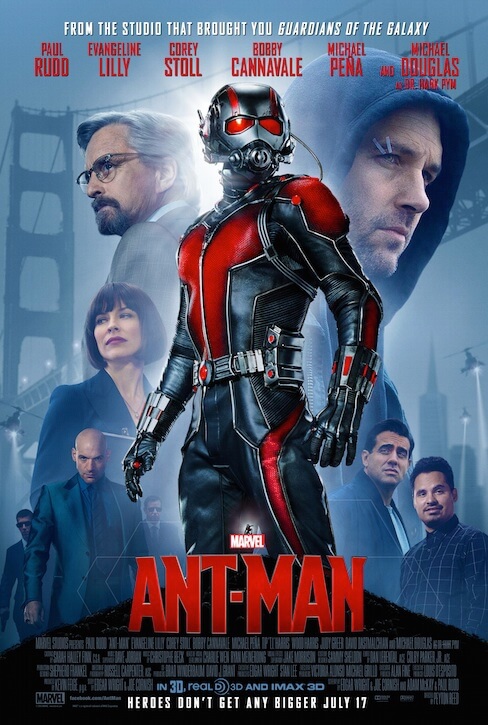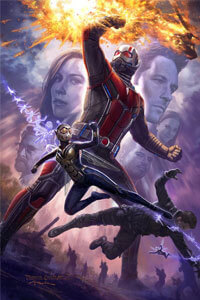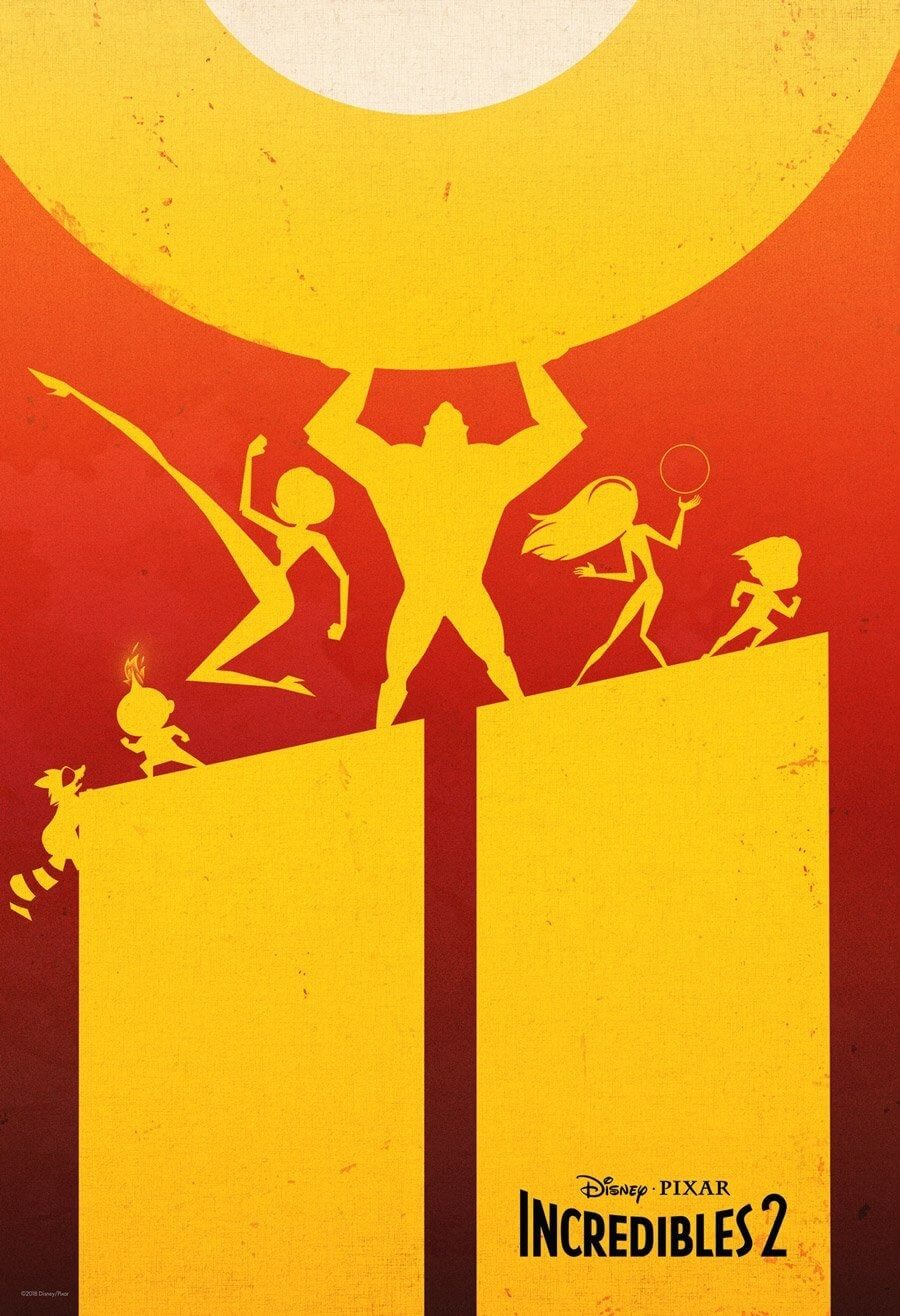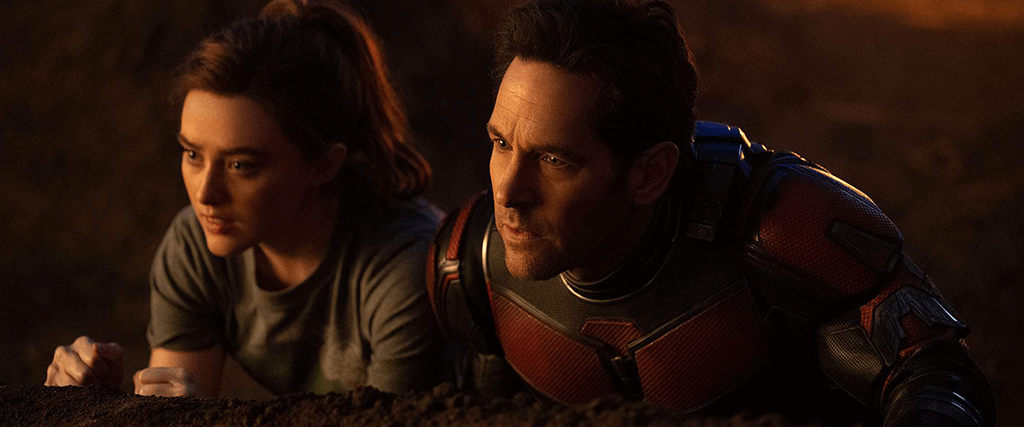
Ant-Man and the Wasp: Quantumania
By Brian Eggert |
One of the more appealing aspects of the Marvel Cinematic Universe involves its franchises within the larger franchise. Captain America’s movies have a different look and feel than Doctor Strange movies, as do the Spider-Man, Black Panther, and Thor movies. Maybe that pliability keeps them watchable over the years, along with mastermind producer Kevin Feige’s ability to oversee narrative cohesion across various worlds. Among the genres within the MCU, Ant-Man (2015) and Ant-Man and the Wasp (2018) have a distinctly comic flair, including the affable presence of Paul Rudd and his chemistry with co-stars Michael Douglas, Michelle Pfeiffer, and Evangeline Lilly. They’re among the most lighthearted entries, avoiding any universe-saving antics for smaller-scale conflicts rooted in minor heists and the family drama around Scott Lang, Ant-Man’s goofball, not-so-secret identity. But Ant-Man and the Wasp: Quantumania sets most of what defines an Ant-Man movie aside for an altogether more expansive entry. Although it maintains a quirky sense of humor, the sequel borrows a familiar template from Star Wars and, what’s more, cannot help but feel like a necessary building block to a crossover in the future. Still, MCU fans will enjoy it.
Launching the MCU’s Phase Five after a somewhat underwhelming Phase 4, the movie is a colorful and entertaining entry in both the Ant-Man and greater MCU franchises. Even if Quantumania is a better title than a movie (similar to last year’s Doctor Strange in the Multiverse of Madness), the result proves an easier watch than the last two MCU titles, the disappointing Thor: Love and Thunder and the overstuffed Black Panther: Wakanda Forever. Regardless, it’s not as accessible as previous Ant-Man movies. Along with the MCU shows on Disney+, the movies lately have been preoccupied with the multiverse, fractured timelines, and the aftereffects of Thanos. It’s all very entrenched in its mythology, which can seem overwhelming if you’re not keeping up. Moreover, since Quantumania’s raison d’être is establishing the new big bad—Kang (Jonathan Majors), whose presence will shape the next two Avengers movies in 2025 and 2026—the proceedings can feel overly tied to the MCU’s many branches. So, after catching up with 30 films and a handful of TV series, you might feel primed for this.
When the story opens, Scott Lang feels pretty good about himself. And why not? He helped save the world after Thanos. Now he rests on his laurels in San Francisco, spending his time on photo ops and promoting his new book—the cornily titled Look Out for the Little Guy! His daughter, Cassie (Kathryn Newton), has grown into an activist teen, ready to fight for any underdog. She’s also a scientist like her father’s mentor, Hank Pym (Douglas). Together, Cassie and Hank built a mini-satellite to monitor the quantum realm—the subatomic world beneath our own. But just as Janet van Dyne (Pfeiffer) warns them not to communicate with the quantum realm, that something dangerous exists there—after all, she spent 30 years trapped there and would know—the group, including Hope, aka the Wasp (Lilly), are sucked into the quantum realm by someone who latches onto their frequency. Scott and Cassie find themselves separated from Hank, Janet, and Hope, in a place Janet describes as having “worlds within worlds” that are “outside time and space.”
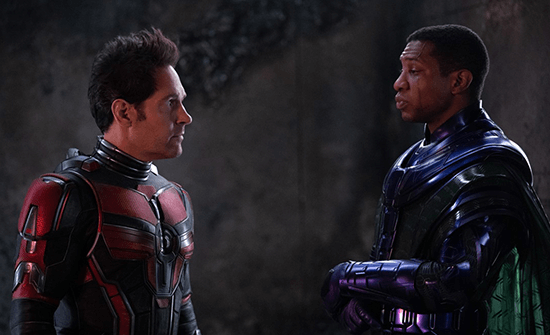 What Janet failed to tell everyone about her years in the quantum realm is that entire universes exist on a subatomic level, complete with a resident emperor, Kang, who other Kangs have exiled from other universes for wiping out entire timelines. Trapped and overseeing an infinitesimal domain of his construction, Kang—the Rick Sanchez of MCU—needs Pym Particles to escape and exact revenge on other Kangs from other universes. He eventually enlists Scott to help, using the imprisoned Cassie as leverage. Along the way, Scott and Cassie meet with a group of rebel freedom fighters who organize to dethrone Kang and his army of mechanized stormtroopers. At the same time, Janet leads Hank and Hope through the treacherous environs of this sci-fi landscape, complete with broccoli-headed aliens, a stop at the local cantina, and a cameo appearance by Bill Murray as a duplicitous wheeler-dealer. Emperors, stormtroopers, rebels, and cantinas—if you think this all sounds like Star Wars, you’re not wrong. Screenwriter Jeff Loveness, best known for Rick and Morty, doesn’t bother to conceal his influences.
What Janet failed to tell everyone about her years in the quantum realm is that entire universes exist on a subatomic level, complete with a resident emperor, Kang, who other Kangs have exiled from other universes for wiping out entire timelines. Trapped and overseeing an infinitesimal domain of his construction, Kang—the Rick Sanchez of MCU—needs Pym Particles to escape and exact revenge on other Kangs from other universes. He eventually enlists Scott to help, using the imprisoned Cassie as leverage. Along the way, Scott and Cassie meet with a group of rebel freedom fighters who organize to dethrone Kang and his army of mechanized stormtroopers. At the same time, Janet leads Hank and Hope through the treacherous environs of this sci-fi landscape, complete with broccoli-headed aliens, a stop at the local cantina, and a cameo appearance by Bill Murray as a duplicitous wheeler-dealer. Emperors, stormtroopers, rebels, and cantinas—if you think this all sounds like Star Wars, you’re not wrong. Screenwriter Jeff Loveness, best known for Rick and Morty, doesn’t bother to conceal his influences.
While it’s easy to accept the clunky plot machinations, there’s plenty to savor in Quantumania’s world-building and humor, often at the same time. The quantum realm recalls last year’s Strange World—given its multicolored subterranean ecosystem inhabited by bizarre creatures, such as subatomic squirrels, jellyfish, and single-celled behemoths—crossed with a vast metropolis. The movie also boasts a fascinating array of amusing humanoid aliens who look more inspired than the last 20 or so years of Star Wars concepts. One gloopy rebel named Veb (voiced by David Dastmalchian, who played a Russian ex-con in the previous two Ant-Man movies) excretes an ooze that functions as a universal translation agent and remains fascinated by Scott’s orifices. Another character, named MODOK (Mechanical Organism Designed Only for Killing)—one of Marvel’s sillier creations—marks the return of Corey Stoll to the MCU after disappearing in Ant-Man. Now, he’s an oversized head with tiny arms and legs, encased within a weaponized floating suit and stricken with an identity complex.
Director Peyton Reed, who helmed both previous Ant-Man movies, returns with a much larger-scale production than its relatively minor predecessors. At any given moment, the characters inhabit a CGI world populated with CGI characters who shoot CGI lasers and ride in CGI ships or atop CGI animals. It all looks costly. Even so, cinematographer William Pope—a regular collaborator with the Wachowskis (The Matrix trilogy) and Sam Raimi (Spider-Man 2 and 3)—renders some stunning imagery amid the digital flatness of the backdrop. Unfortunately, the editors (Adam Gerstel, Laura Jennings) do the footage a disservice by chopping the action during the rebellion scenes or borderline unintelligible sequences where Ant-Man, the Wasp, or Cassie have shrunk to microscopic size. Better are those sequences involving an embiggened Ant-Man, who slowly marches into Kang’s territory to unleash hell. The final bout is also tense.
Admittedly, the superhero action and ever-expanding cinematic universe aren’t what kept me invested in Quantumania. Instead, it’s the chummy dynamic among our protagonists, headlined by Rudd and supported by a movie-stealing performance from Pfeiffer, whose severe presence and history with Kang drive the plot. As Kang, Majors has an intimidating force, even though his character’s powers are unclear (he can wave his fingers and do just about anything, shoot blue light out of his fists, yet resorts to fisticuffs against Scott—I don’t get it). Along with Douglas, Newton, and Lilly, this second Ant-Man sequel offers plenty of personalities that help maintain the balance between laughs and Marvel mythology. It’s not a glib joke-fest like Thor: Love and Thunder was, and the movie doesn’t take itself too seriously, either. Quantumania fulfills its duties in the manner of most mid-level MCU adventures that lead to bigger, better things; it doesn’t overstay its welcome; and it remains cohesive with the established characters and universe. Although it’s rarely more than another Marvel programmer, it’ll keep your attention for two hours.
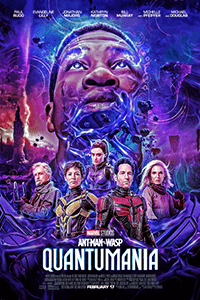
Thank You for Supporting Independent Film Criticism
If the work on DFR has added something meaningful to your love of movies, please consider supporting it.
Here are a few ways to show your support: make a one-time donation, join DFR’s Patreon for access to exclusive writing, or show your support in other ways.
Your contribution helps keep this site running independently. However you choose to support the site, please know that it’s appreciated.
Thank you for reading, and for making this work possible.
Brian Eggert | Critic, Founder
Deep Focus Review


